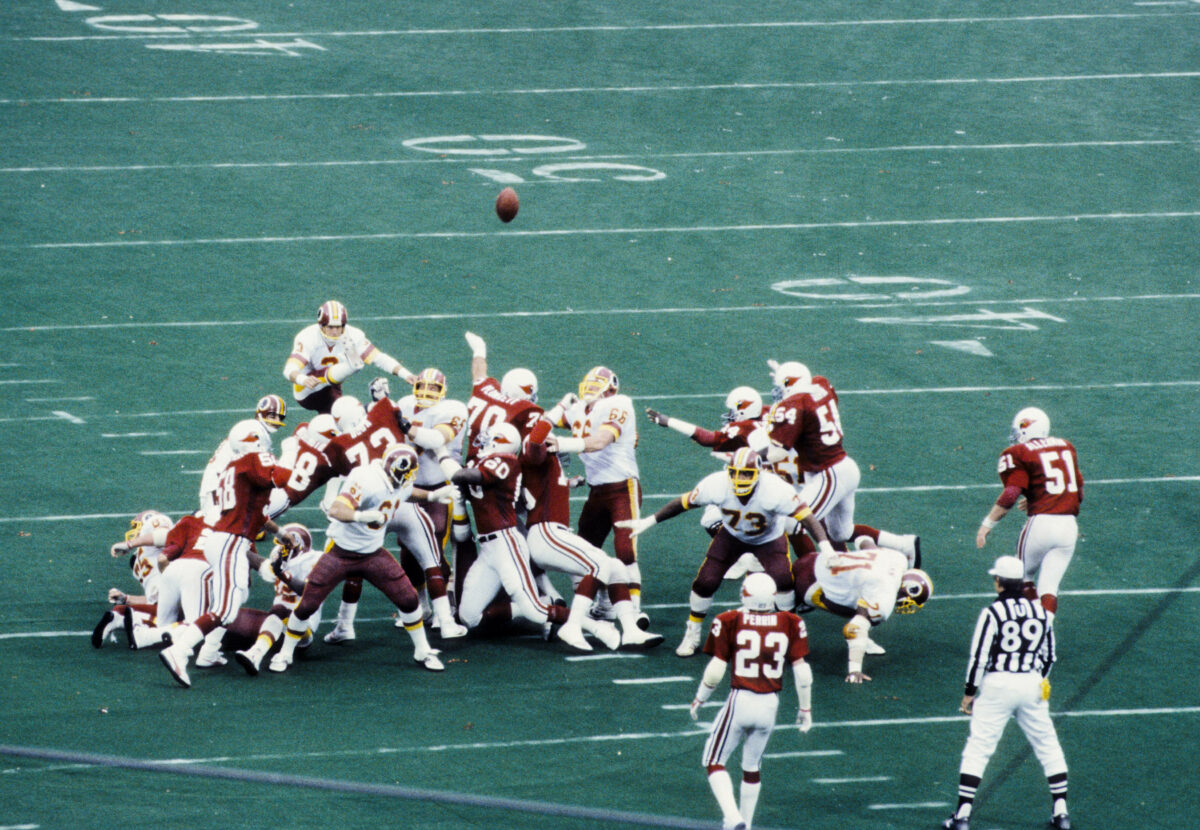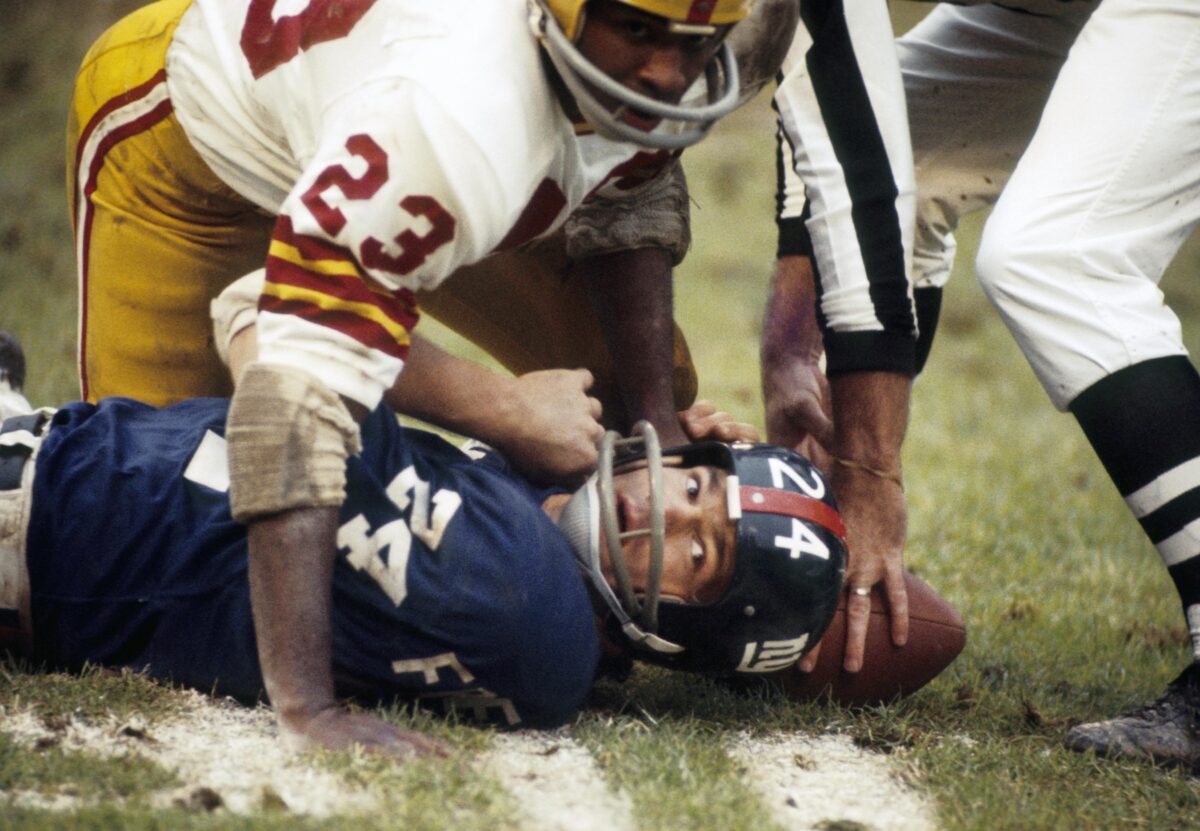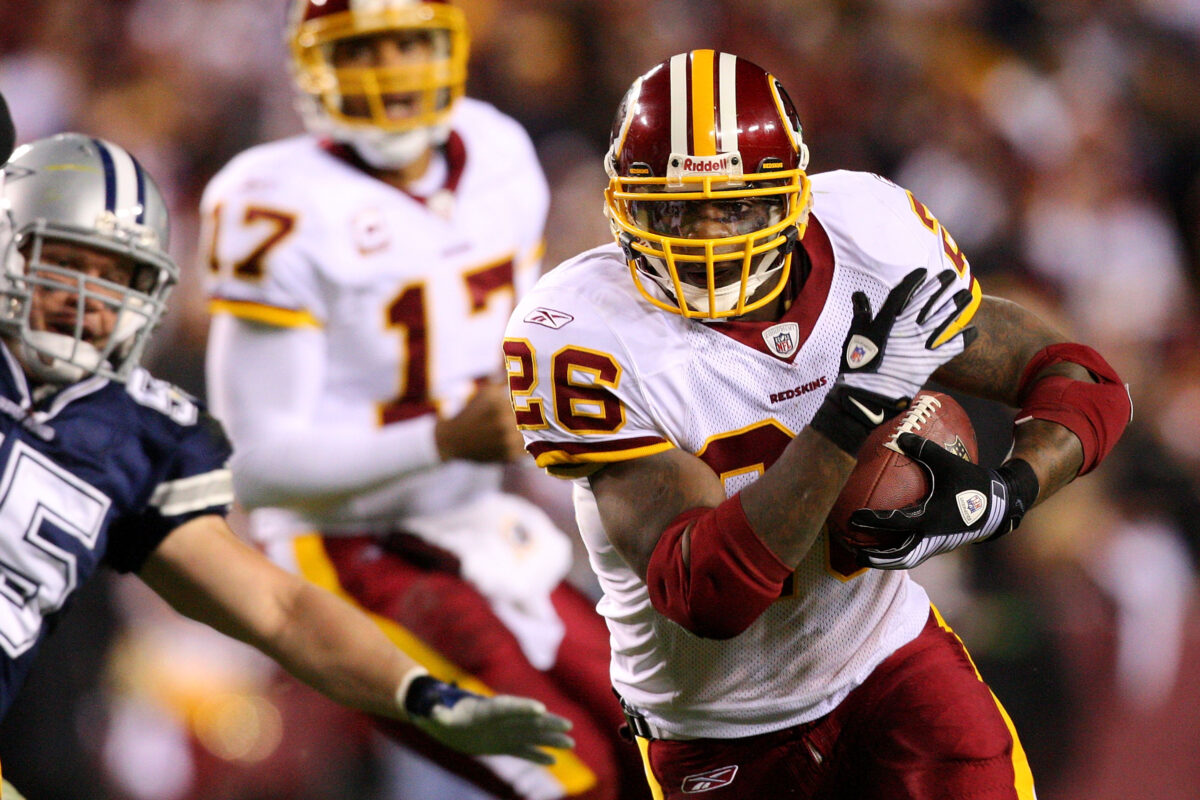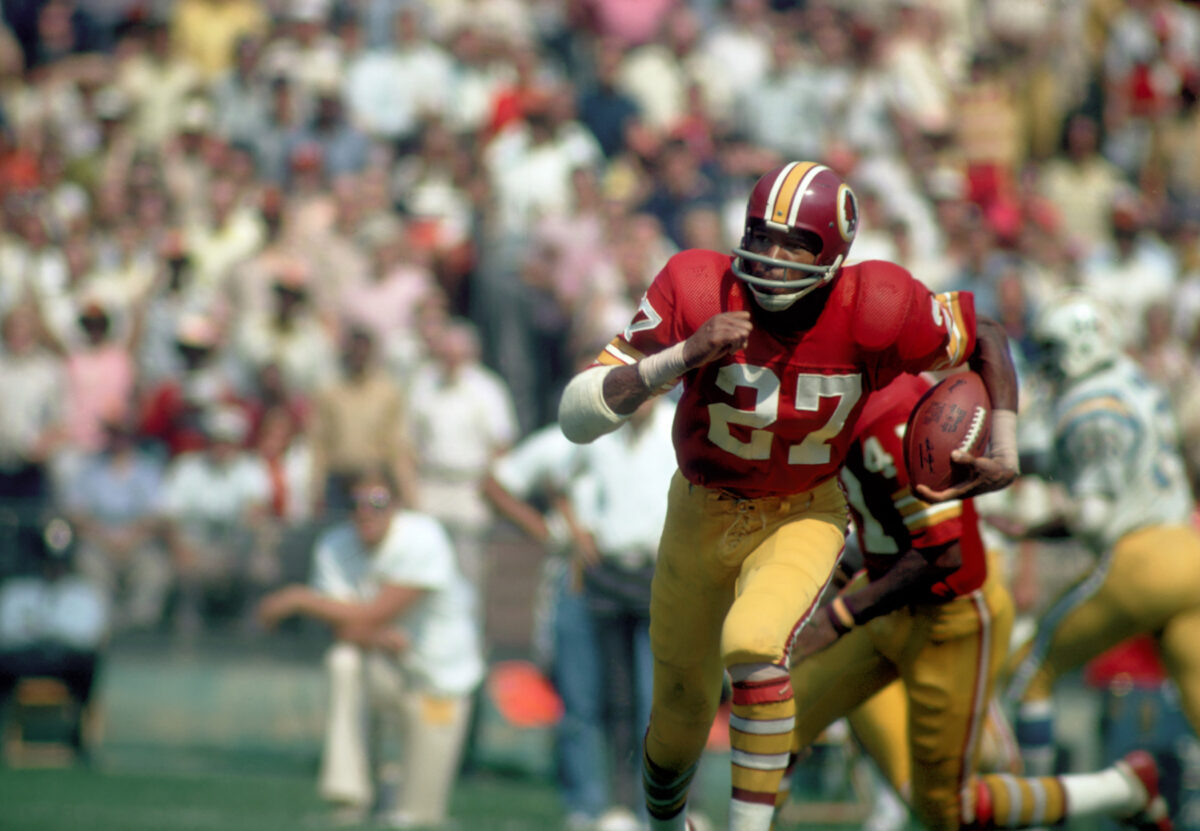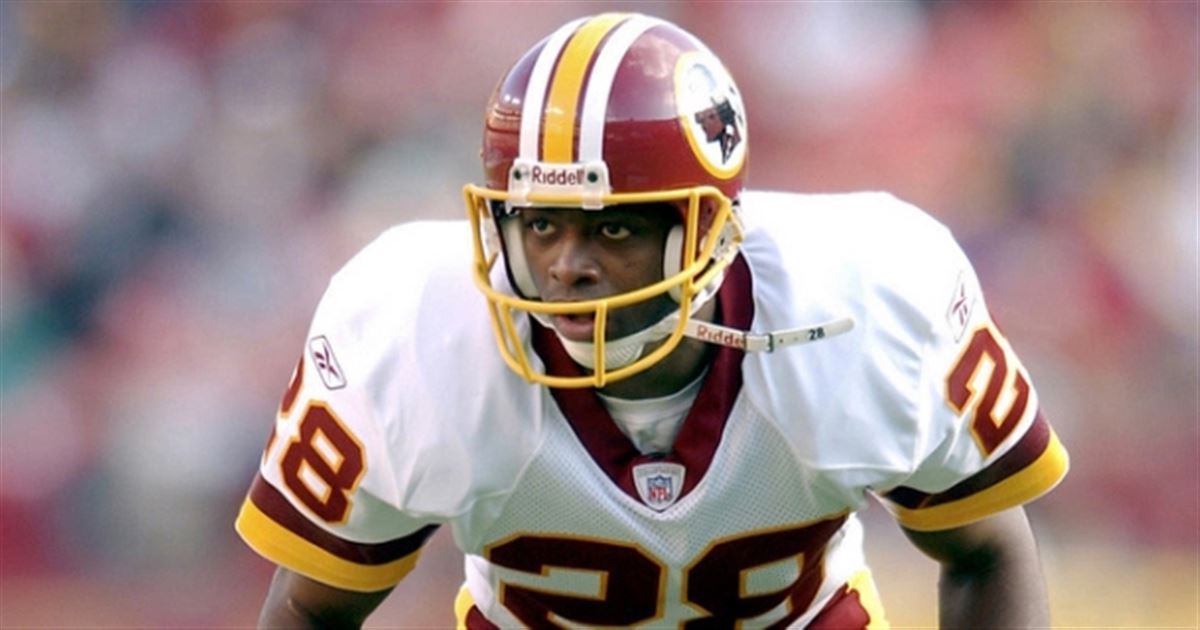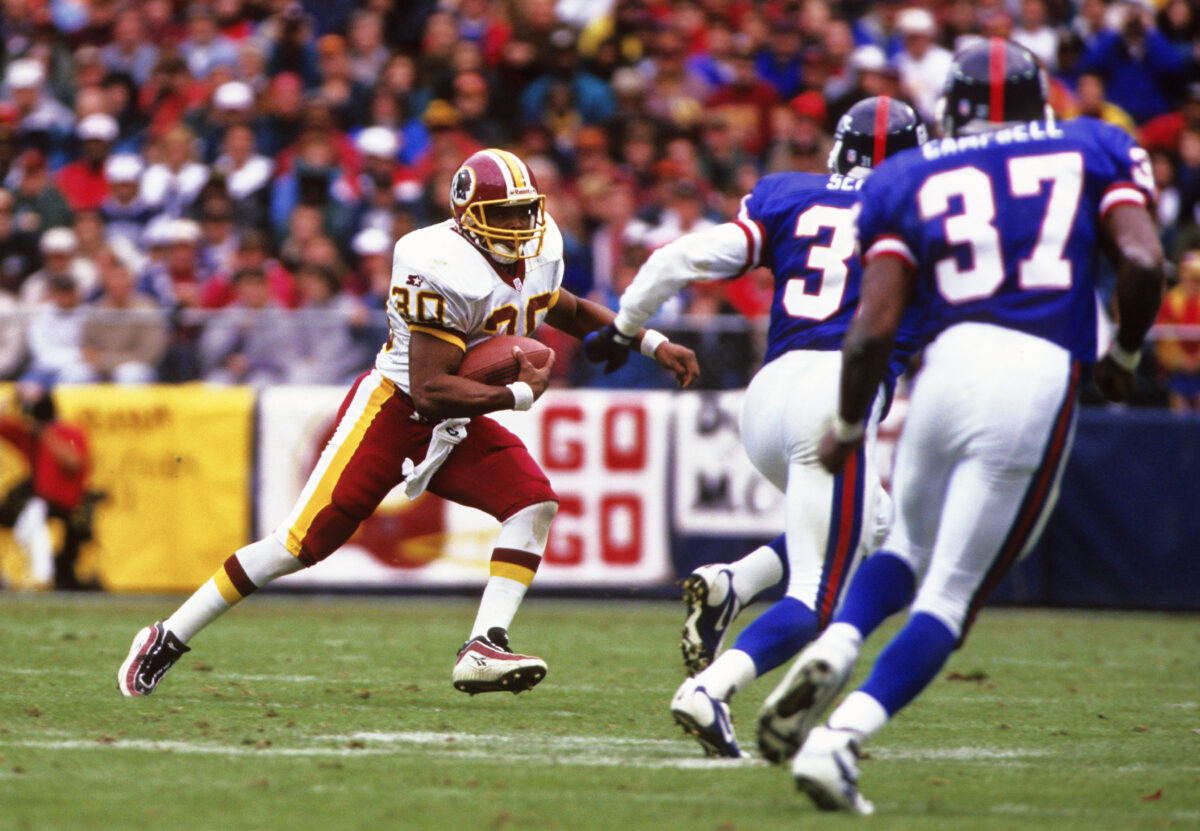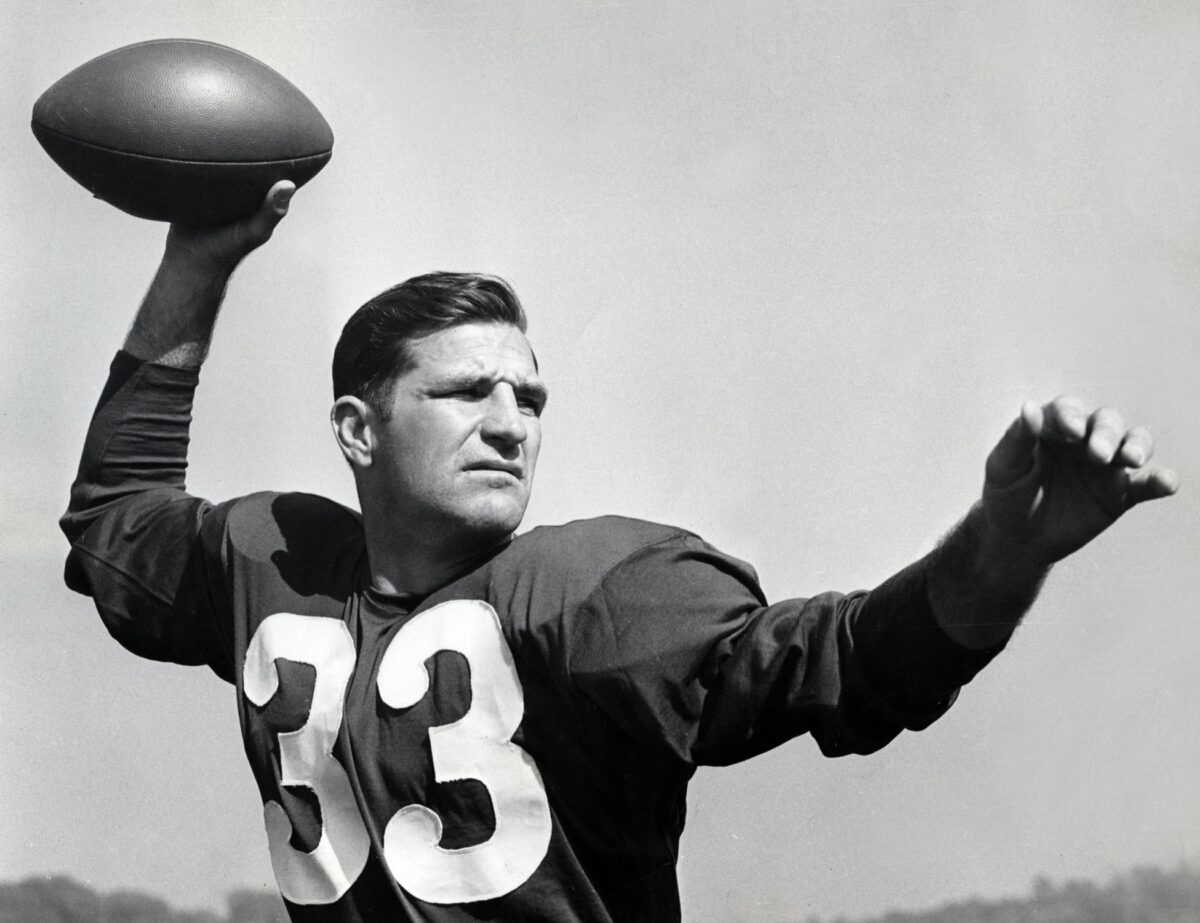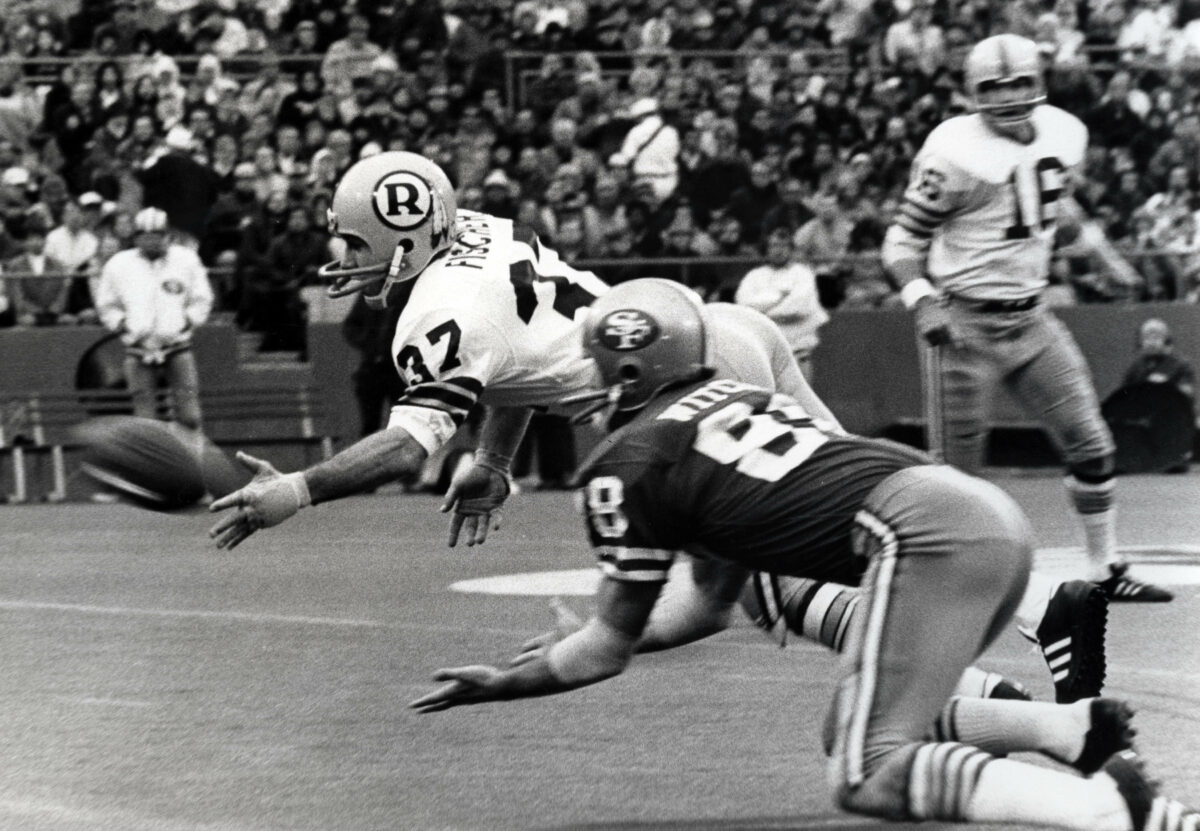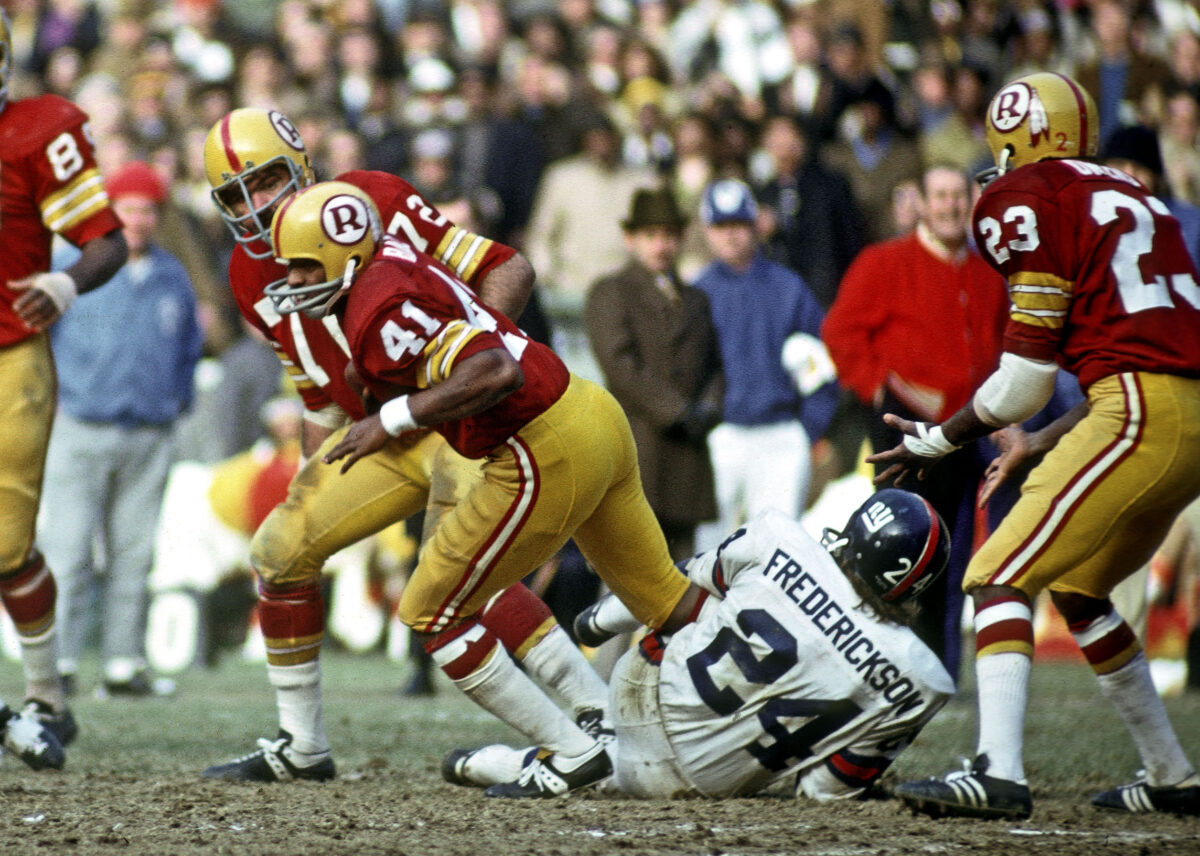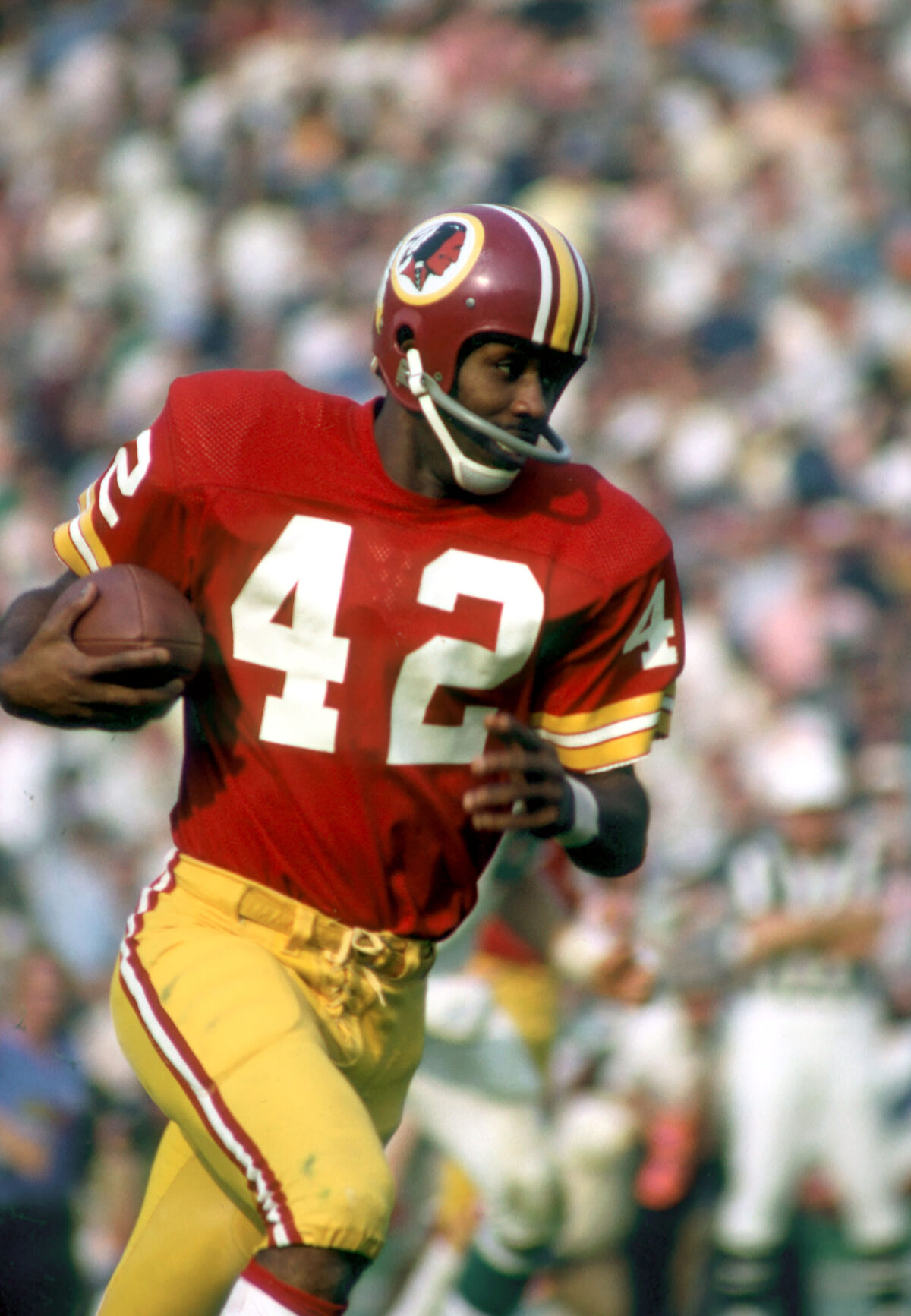Commanders Wire continues a countdown to Washington’s season opener for 2023 in 3 days. Who was the team’s best player wearing No. 3?
No. 3 recalls to mind some big moments and frustrating moments in franchise history.
First, for the bad news. Cornerback William Jackson III came to Washington being highly touted. However, his performance did not live up to the hype at all, and the Commanders released him in his second season with Washington.
Observing fans will recall Jim Zorn’s infamous “Swinging Gate” fiasco in a home game against the Giants in 2009. The player who threw the pass up for grabs on the trick play was punter Hunter Smith. Smith spent his last two NFL seasons with Washington. He wore No. 3 in 2009 and No. 17 in 2010.
Nothing says frustrating like quarterback Jeff George wearing No. 3 for Washington. Mr Snyder, the owner, wanted and purchased the age 33 George, though he already had Brad Johnson. So, Washington was 1-4 in the games George started in 2000. In 2001, the team’s first two games were utter embarrassments to the franchise losing to the Chargers 30-3 and Packers 37-0 on MNF. New head coach Marty Schottenheimer had seen enough and released the quarterback. They were the last two regular season games George played in the NFL. With Tony Banks receiving the other 14 starts, Washington finished 8-8.
Kicker Dustin Hopkins (2015-21) came to Washington after brief stays in Buffalo and New Orleans. Following the 2017 season, Hopkins was resigned by Washington to a three-year deal. In 2021 during a 31-13 home loss to the Chiefs, Hopkins made two of three field goal attempts. But was released as head coach Ron Rivera sent a message to his team.
Washington Football Team expected to re-sign K Dustin Hopkins to one-year deal later this week, per @TomPelissero https://t.co/2sv2UzvvyI pic.twitter.com/4U4RM57XeN
— Around The NFL (@AroundTheNFL) March 14, 2021
Mark Moseley (1974-1986) came to Washington in 1974 as a free agent, hoping to land a job in the NFL. Moseley had already been released by the Eagles (1971), then the Oilers (1972), and no team wanted him in 1973. Washington then signed Moseley in 1974, moving on from previous kicker Curt Knight (1969-73). Moseley proceeded to lead the NFL in field goals made in 1976, 1977, 1979 and 1982. During the 1982 season, Moseley set a then-NFL record when he ran his consecutive field goal made streak to 23. He finished the season 20 of 21 for a 95.2 percent success rate, and was voted All-Pro 1st Team and NFL MVP for the 1982 season. The following season, Moseley led the NFL in extra points when he was successful on 62 of 63 attempts 98.4% while setting an NFL record of 161 points scored.
Mark Mosely (Redskins, 1982) pic.twitter.com/lWLc8K4BX6
— Sell The Commanders (@HTTR_HTTC) November 5, 2022
Being the kicker on the three straight divisional champs teams (1982-84) the NFC Championship 1983 team and the Super Bowl Championship team of 1982, Moseley was voted as one of the 70 Greatest Redskins in 2002.
On December 19, 1982, Mark Moseley kicked a 42-yard field goal in the final seconds and the Redskins defeated the NYG 15-14 at RFK Stadium. #HTTR #TBT pic.twitter.com/TbY99X0zYW
— David Menassé (@Frekiwolf) December 28, 2017
